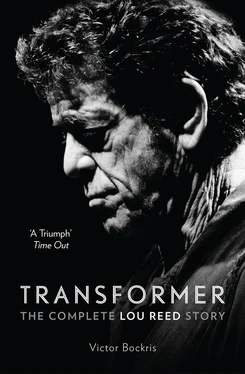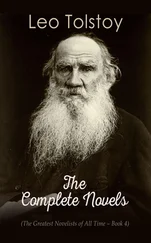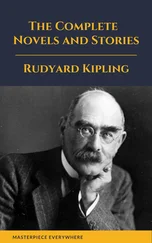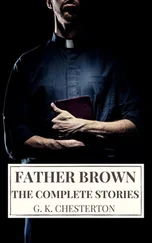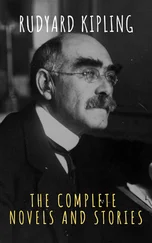As a freshman, Lou was assigned to the far southwestern corner of the North Campus in Sadler Hall, a plain, boxlike dormitory resembling a prison. However, much of his time was spent in the splendid, gray-stone Hall of Languages, which overlooked University Avenue and University Place at the north end of campus and housed the English, history, and philosophy departments.
Syracuse University had excellent faculty and academic courses. Though Lou may have sleepwalked through much of the curriculum, he threw himself into the music, philosophy, and literature studies in which he excelled. In music appreciation, theory, and composition classes, Lou soaked up everything, even opera. First, Lou tried his hand at journalism, but he dropped that after a week when the teacher told him his opinions were irrelevant. However, Lou quickly immersed himself in philosophy. He devoured the existentialists, obsessed over the tortuous dialectics of Hegel, and embraced the Fear and Trembling of Kierkegaard. “I was very into Hegel, Sartre, Kierkegaard,” Reed recalled. “After you finish reading Kierkegaard, you feel like something horrible has happened to you—fear and nothing. That’s where I was coming from.” He also loved Krafft-Ebing and the writing of the beat generation, particularly Kerouac, Burroughs, and Ginsberg. To complete his freshman image, he took imagistic inspiration from the brash, tortured figures of James Dean, Marlon Brando, and, most of all, Lenny Bruce.
To his advantage, Reed already had the perfect agent to introduce him to the university, the smooth operator and prince of good times Allen Hyman, now entering his sophomore year. Another pampered suburban kid who drove both a Cadillac and Jaguar, Allen was generous, full of good humor, and sharp-witted. Furthermore, he genuinely appreciated Lou and was willing to put up with a lot of flak to remain his friend. Hyman was well connected with the straight fraternity set and eager to introduce Lewis to his world.
However, a highly uncomfortable introduction came about when Allen tried to get Lou to rush his fraternity, Sigma Alpha Mu (aka the Sammies). “Hazing was a really horrendous experience and most people were very intimidated by it,” recalled Hyman. Inductees were forced to drink themselves into oblivion and were often humiliated physically, sexually, and mentally by the fraternity brothers. When Allen told Lou stories about what he went through to join a fraternity, Lou shot him a hard look, snapping, “What are you into—masochism?”
“He had said that he didn’t want anything to do with it and that it was fascistic and disgusting,” Hyman recalled, “and he couldn’t believe anybody would be willing to go through hazing without killing the person who was hazing them.” However, typically perversely, Reed agreed to attend a rush session.
From the outset it was clear that he intended to make a strong impression. Reed came to the socializer in a suit three sizes too small and covered in dirt. It was a radical departure from the blue blazer, smart tie, and neatly combed hair of the other rushees. Allen immediately realized how much Lou was getting off on being outrageous. When one of the brothers criticized Lou’s appearance, Reed riposted, “Fuck you!” and his fraternity career came to an abrupt end. Hyman was asked to escort his friend out immediately. Walking Lou back to his dorm, a chagrined Allen hung his head regretfully, but Lou, far from being despondent, appeared exhilarated by the event. “I guess this isn’t for you,” Allen said.
“Yeah, that’s right,” Lou replied. “I told you I wouldn’t get along with those assholes. How can you live there?”
Another freshman trial that Lou failed was with the Reserve Officers’ Training Corps. As part of his freshman course requirements, he had to choose between physical education and ROTC. (In those days it was common to join ROTC in order to be able to go into the army as an officer and a gentleman.) Claiming that he would surely break his neck in phys ed or else kill somebody in ROTC, Lou attempted to evade either requirement, but in the end grudgingly signed up for the latter. ROTC consisted of two classes a week about how to be a soldier and possibly a leader. However, Lou’s military experience was almost a short-lived as his fraternity stint. Just weeks into the semester, when he flatly refused a direct order from his officer, he was unceremoniously booted out.
But Reed managed to make an impact on his freshman year with his very own radio show. Employing a considerable boyish charm to overcome the severe doubts of program director Katharine Griffin, during his first semester Lou hustled his way onto the Syracuse University radio station, WAER FM, with a jazz program called Excursions on a Wobbly Rail (named for a wicked Cecil Taylor piece that was used as his introductory theme). The classical, conservative station, Radio House, was situated in a World War II Quonset hut tucked away behind Carnegie Library. Freezing his balls off through many icy Syracuse evenings, hunched over his ancient machinery like some WWII underground resistance fighter for two hours, three nights a week, Lou blasted a mélange of his favorite sounds by the avant-garde leaders of the Free Jazz movement Ornette Coleman and Don Cherry, the doo-wopping Dion, and the sexually charged Hank Ballard, James Brown and the Marvelettes. The mixture presented the essence of Lou Reed. “I was a very big fan of Ornette Coleman, Cecil Taylor, Archie Shepp,” he recalled. “Then James Brown, the doo-wop groups, and rockabilly. Put it all together and you end up with me.”
Unfortunately, the Reedian canon was not appreciated by the station’s staff, and numerous faculty members, including the dean of men, lodged complaints about the—to them—hideous, unintelligible cacophony that was Reed’s program. And the authorities’ reaction was not Lou’s only problem. Disguising his voice, Allen Hyman would often call Lou at the station and harass him with ridiculous requests. On one occasion, “I asked him to play something he hated and I knew he would never play,” Allen recalled. “He said, ‘No, I’m not going to play that, forget it.’ So I said, ‘Listen, if you don’t play this, I’m gonna fucking have you killed. I’ll wait for you myself and I’m gonna kill you!’ And, thinking it was some lunatic, Lou got scared. Then I called him back and told him it was me and he screamed at me, saying that if I ever did that again he’d never speak to me.”
As it turned out, Allen’s pranks didn’t last long enough to lose him Lou’s friendship because before long Griffin, ever vigilant in her duties as WAER’s program director, concluded that “ Excursions on a Wobbly Rail was a really weird jazz show that sounded like some new kind of noise. It was just too weird and cutting edge.” Before the end of the semester, she unceremoniously dumped it from the air, causing Lou considerable anguish.
In retrospect, Griffin and her contemporaries realized that Reed was simply ahead of his time. “Most of us who were in power on campus were children of the fifties,” she explained. “Kids in those days wore chinos and madras shirts, a clean-cut Kingston Trio kind of thing. Lou looked more like what a rock person from later in the sixties would look like. Lou was presaging the sixties and seventies and we just weren’t ready for it. He was right on the cusp of two generations. A little too far ahead to be admired in the fifties.”
During his first year at Syracuse, the scholarly Griffin concluded, “It was just Lou versus everybody else.”
Lou quickly defined himself as an oddball loner. Eschewing all organizations, he was creating an image that would in time become widely acknowledged as the essence of the hip New York underground man. Lou was a year older than most freshmen and fully grown. Measuring five feet eight inches (although he claimed to be five feet ten) he was a little chubby and some way yet from the Lou Reed of “Heroin.” He wore loafers, jeans, and T-shirts, tending, if anything, to be a little sloppier than the majority of men at school, who wore the fraternity uniform of jacket and tie. His hair was a trifle longer than theirs. Otherwise, he would not have been noticed in a crowd. His looks tended toward the cute, boyish, curly haired, shy, gum-chewing. He had a small scar under his right eye. His most unusual feature was his fingers. Short and strong, they broadened into stubby, almost blocklike fingertips, making them perfect tools for the guitar.
Читать дальше
